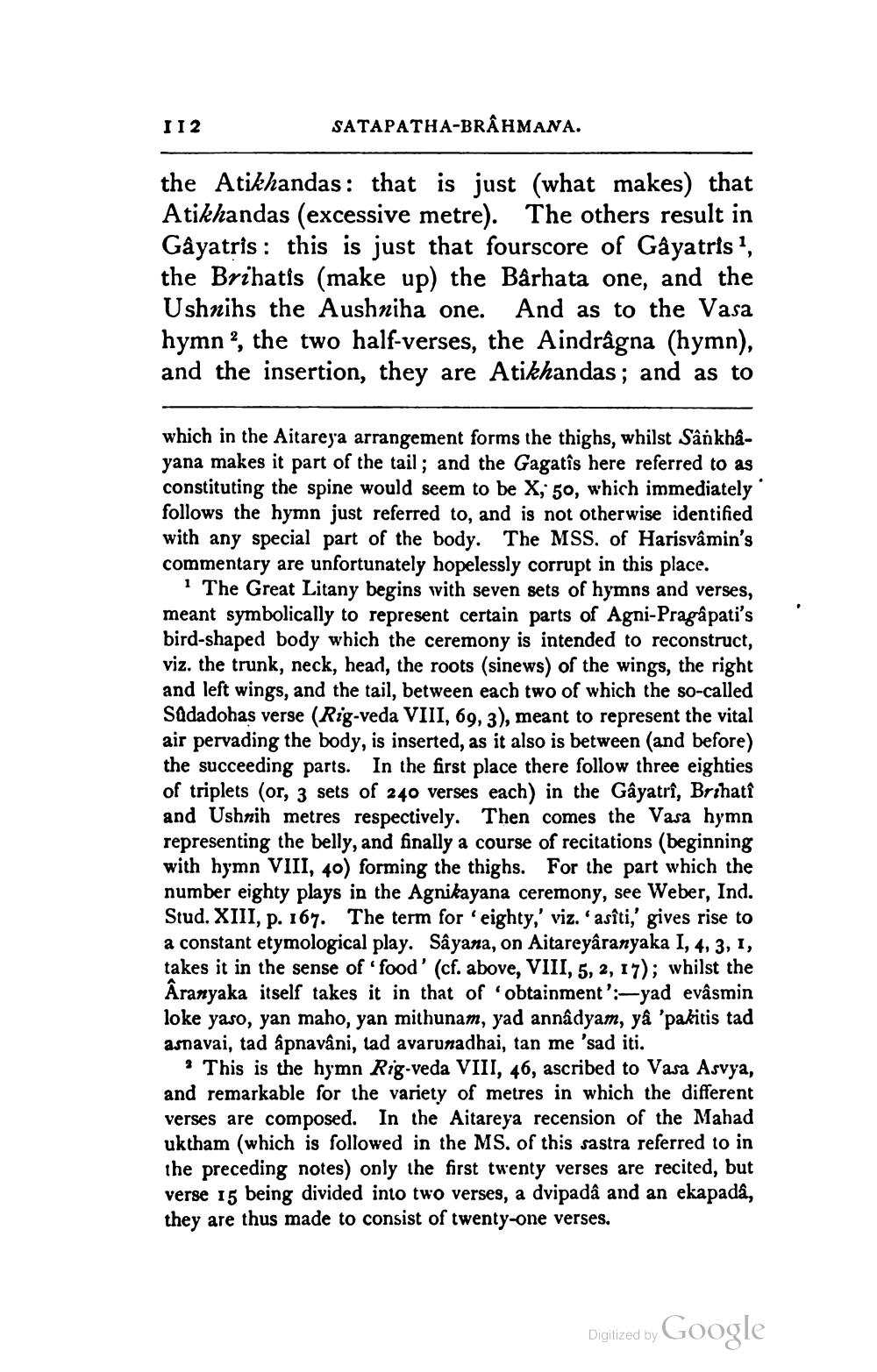________________
II2
SATAPATHA-BRAHMANA.
the Atikhandas: that is just (what makes) that Atikhandas (excessive metre). The others result in Gayatris : this is just that fourscore of Gâyatris 1, the Brihatis (make up) the Barhata one, and the Ushnihs the Aushniha one. And as to the Vasa hymn?, the two half-verses, the Aindragna (hymn), and the insertion, they are Atikhandas; and as to
which in the Aitareya arrangement forms the thighs, whilst Sânkhayana makes it part of the tail; and the Gagatîs here referred to as constituting the spine would seem to be X, 50, which immediately follows the hymn just referred to, and is not otherwise identified with any special part of the body. The MSS. of Harisvâmin's commentary are unfortunately hopelessly corrupt in this place.
The Great Litany begins with seven sets of hymns and verses, meant symbolically to represent certain parts of Agni-Pragâpati's bird-shaped body which the ceremony is intended to reconstruct, viz. the trunk, neck, head, the roots (sinews) of the wings, the righ and left wings, and the tail, between each two of which the so-called Sadadohas verse (Rig-veda VIII, 69, 3), meant to represent the vital air pervading the body, is inserted, as it also is between (and before) the succeeding parts. In the first place there follow three eighties of triplets (or, 3 sets of 240 verses each) in the Gayatri, Brihati and Ushnih metres respectively. Then comes the Vasa hymn representing the belly, and finally a course of recitations (beginning with hymn VIII, 40) forming the thighs. For the part which the number eighty plays in the Agnikayana ceremony, see Weber, Ind. Stud. XIII, P. 167. The term for eighty,' viz. 'asîti,' gives rise to a constant etymological play. Sayana, on Aitareyâranyaka I, 4, 3, 1, takes it in the sense of 'food' (cf. above, VIII, 5, 2, 17); whilst the Aranyaka itself takes it in that of 'obtainment':-yad evâsmin loke yaso, yan maho, yan mithunam, yad annadyam, ya 'pakitis tad asnavai, tad apnavâni, lad avarunadhai, tan me 'sad iti.
9 This is the hymn Rig-veda VIII, 46, ascribed to Vasa Asvya, and remarkable for the variety of metres in which the different verses are composed. In the Aitareya recension of the Mahad uktham (which is followed in the MS. of this sastra referred to in the preceding notes) only the first twenty verses are recited, but verse 15 being divided into two verses, a dvipada and an ekapadá, they are thus made to consist of twenty-one verses.
Digitized by Google




